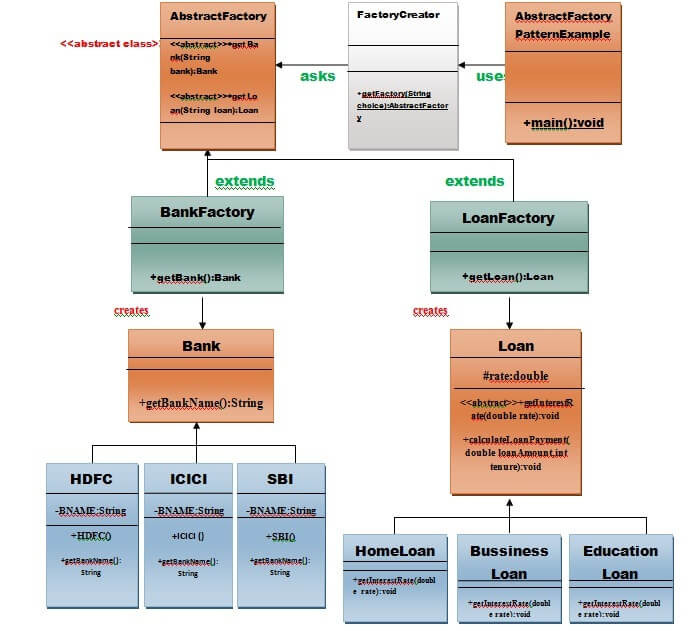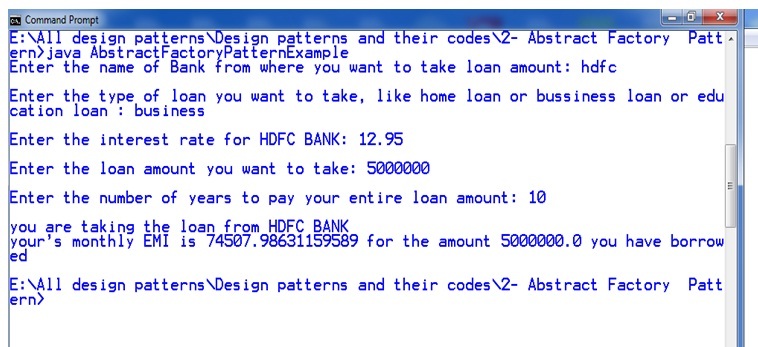Abstract Factory PatternAbstract Factory Pattern says that just define an interface or abstract class for creating families of related (or dependent) objects but without specifying their concrete sub-classes.That means Abstract Factory lets a class returns a factory of classes. So, this is the reason that Abstract Factory Pattern is one level higher than the Factory Pattern. An Abstract Factory Pattern is also known as Kit. Advantage of Abstract Factory Pattern
Usage of Abstract Factory Pattern
UML for Abstract Factory Pattern

Example of Abstract Factory PatternHere, we are calculating the loan payment for different banks like HDFC, ICICI, SBI etc. Step 1: Create a Bank interface Step 2: Create concrete classes that implement the Bank interface. Step 3: Create the Loan abstract class. Step 4: Create concrete classes that extend the Loan abstract class.. Step 5: Create an abstract class (i.e AbstractFactory) to get the factories for Bank and Loan Objects. Step 6: Create the factory classes that inherit AbstractFactory class to generate the object of concrete class based on given information. Step 7: Create a FactoryCreator class to get the factories by passing an information such as Bank or Loan. Step 8: Use the FactoryCreator to get AbstractFactory in order to get factories of concrete classes by passing an information such as type. Output
Next TopicSingleton Design Pattern In Java
|
 For Videos Join Our Youtube Channel: Join Now
For Videos Join Our Youtube Channel: Join Now
Feedback
- Send your Feedback to [email protected]
Help Others, Please Share










